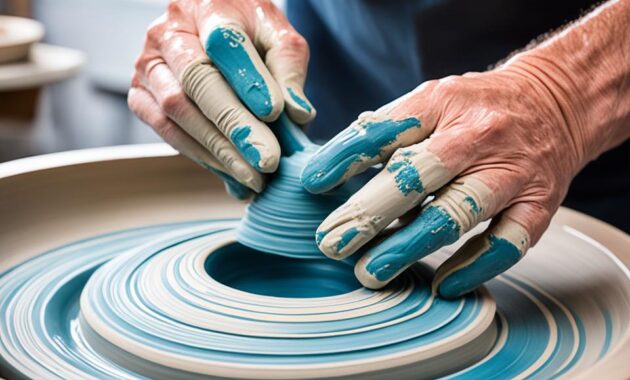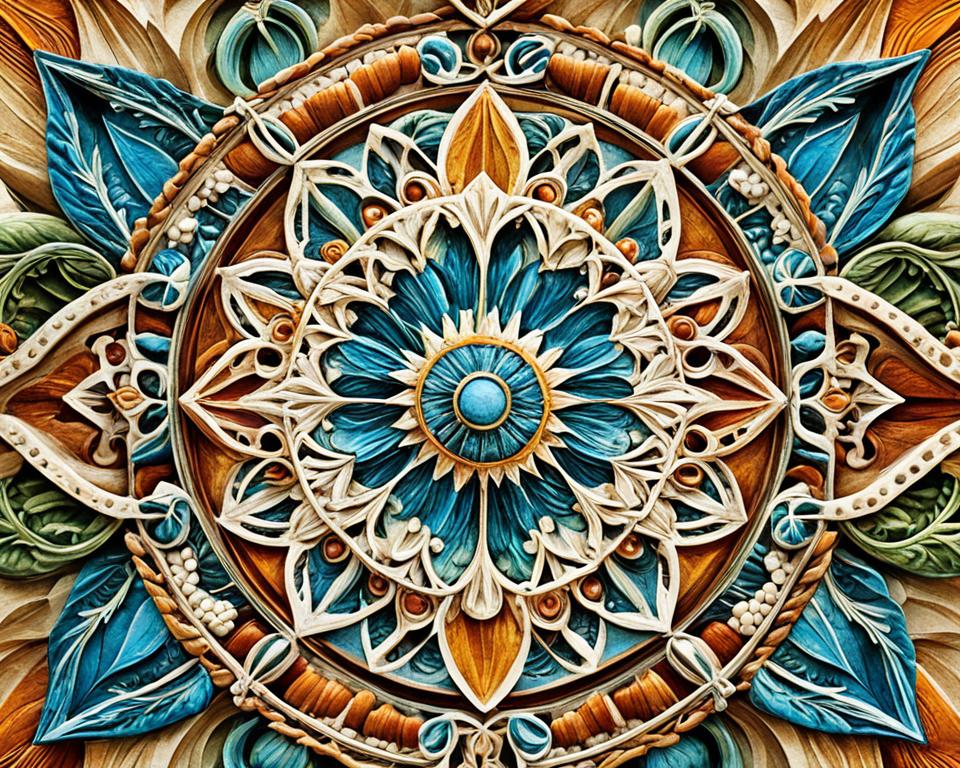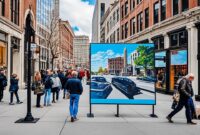Prepare to embark on a captivating exploration of the vibrant and ever-evolving world of visual arts. This journey will take you from ancient masterpieces that have withstood the test of time to the innovative, boundary-pushing creations of modern-day artists. You will delve into the diverse mediums, techniques, and styles that have captivated audiences throughout history.
Discover the power of visual expression as we unravel the stories and emotions woven into paintings, sculptures, photographs, and more. Immerse yourself in the creative process, where imagination and skill converge to bring forth works that challenge, inspire, and captivate the senses.
Key Takeaways
- Unlock the captivating world of visual arts, where creativity and imagination intertwine.
- Explore a diverse range of mediums, from painting and sculpture to photography and ceramics.
- Discover how visual arts have evolved throughout history, from ancient civilizations to contemporary masterpieces.
- Understand the power of visual expression and its ability to evoke emotions and challenge perceptions.
- Gain a deeper appreciation for the creative process and the artists who bring their visions to life.
Unveiling the Captivating World of Visual Arts
The realm of visual arts is a captivating tapestry, tracing its roots back to the stunning cave paintings of prehistoric societies. It has evolved from the grandeur of ancient Egyptian and Greek sculptures to the revolutionary impressionist paintings of the 19th century. This evolution has continuously pushed the boundaries of artistic expression.
From Ancient Civilizations to Contemporary Masterpieces
Visual arts have long been a reflection of the human experience, capturing the essence of cultures and civilizations across time and space. Iconic works, such as the towering statues of Ramses II and the breathtaking frescoes of the Sistine Chapel, stand as testaments to our ancestors’ ingenuity and creativity. As humanity progressed, so did the artistic landscape, giving rise to the masterful brushstrokes of the Renaissance and the bold experimentations of the Impressionists.
Today, the visual arts continue to inspire and challenge us, providing a canvas for the expression of our collective dreams, fears, and aspirations. From vibrant murals adorning city walls to captivating sculptures in public spaces, these arts have the power to captivate, educate, and transform our perceptions of the world.
| Historical Period | Artistic Highlights | Artistic Movements |
|---|---|---|
| Prehistoric | Cave paintings, rock carvings | Primitive art |
| Ancient Civilizations | Egyptian sculptures, Greek sculptures, Roman mosaics | Classical art |
| Middle Ages | Byzantine mosaics, Romanesque architecture, Gothic cathedrals | Medieval art |
| Renaissance | Michelangelo’s Sistine Chapel, Leonardo da Vinci’s paintings | Renaissance art |
| Modern Era | Impressionist paintings, Cubist sculptures, Surrealist installations | Modern art movements |
| Contemporary | Street art, digital art, conceptual art | Contemporary art |
“Art is not what you see, but what you make others see.” – Edgar Degas
Painting: A Canvas of Emotions
Painting stands as a profound art form, enabling artists to convey their deepest emotions and distinctive viewpoints. It spans from the intense, expressive strokes of expressionism to the detailed precision of realism. The art of painting employs color, composition, and technique to elicit strong emotional responses, engaging the viewer on a visceral level.
The realm of painting encompasses a broad spectrum, from the vivid colors and dynamic layouts of abstract expressionism to the lifelike depictions of hyperrealism. Through deft control over the canvas, artists can express emotions, narrate stories, and challenge our understanding of reality.
Painting’s enduring appeal, from the classical masterpieces of the Renaissance to the avant-garde works of today, captivates and motivates people globally. It excels in capturing the human experience, celebrating nature’s splendor, and prompting profound contemplation. This makes painting a timeless and potent medium for artistic expression.
| Painting Technique | Characteristics |
|---|---|
| Expressionism | Bold, emotive brushstrokes; distorted forms; vibrant colors |
| Realism | Meticulous attention to detail; accurate depiction of reality |
| Abstract Expressionism | Spontaneous, gestural application of paint; emphasis on the process |
| Hyperrealism | Photographic-like precision in rendering; capturing the essence of reality |
“Painting is poetry that is seen rather than felt, and poetry is painting that is felt rather than seen.” – Leonardo da Vinci
Sculpture: Breathing Life into Stone and Metal
Sculpture is an art form that enables artists to infuse life into seemingly lifeless materials. Through the meticulous carving of stone and the dynamic shaping of metal, sculptors exhibit an extraordinary skill. They transform the inert into the captivating, elevating the ordinary to the sublime.
Exploring Techniques and Materials
The realm of sculpture is both diverse and captivating, with artists utilizing a broad spectrum of techniques and materials. Some prevalent techniques include:
- Carving: Removing material from a solid block to reveal the desired form.
- Modeling: Shaping and molding materials like clay or wax to create the desired shape.
- Casting: Pouring liquid materials, such as bronze or resin, into a mold to create a sculpture.
- Welding: Joining metal pieces together to construct intricate, three-dimensional forms.
The selection of materials is pivotal in sculpture. Artists often choose from a variety of materials, including stone, metal, wood, clay, and even found objects. Each material presents unique properties, challenges, and aesthetic qualities. These allow sculptors to convey their artistic vision in diverse ways.
By mastering technique and materiality, sculptors craft works that captivate and inspire. Whether it’s the elegant curves of a bronze figure or the textured surface of a stone carving, sculpture’s artistry has the power to alter our perception of the world.
Photography: Capturing Life’s Fleeting Moments
Photography is an art form that enables us to freeze time, preserving the ephemeral moments that weave our lives together. Photographers possess the ability to transform the mundane into the extraordinary, encapsulating a scene’s essence with a single shutter click.
The Art of Composition and Lighting
Photography transcends mere camera use; it demands a sharp composition sense and a profound grasp of lighting’s impact on an image’s mood. Skilled photographers meticulously arrange their subjects, balancing elements within the frame to craft a narrative that stirs the viewer’s emotions.
The progression from film to digital photography has broadened the scope of visual storytelling. Modern digital cameras and sophisticated editing tools grant photographers unparalleled control over their images. This allows for the manipulation of light, color, and perspective, aiming to elicit a specific emotional response.
| Technique | Description |
|---|---|
| Rule of Thirds | Dividing the frame into a grid of nine equal parts to create a more balanced and visually appealing composition. |
| Leading Lines | Utilizing natural or man-made lines within the frame to guide the viewer’s eye towards the subject. |
| Dramatic Lighting | Manipulating light sources to create striking contrasts and dramatic shadows, adding depth and emotion to the image. |
For both seasoned photographers and enthusiastic hobbyists, the art of composition and lighting is a continuous exploration and expression. This visual medium empowers us to capture life’s fleeting moments, sharing them with the world.
“Photography is a way of feeling, of touching, of loving. What you have caught on film is captured forever… it remembers little things, long after you have forgotten everything.”
– Aaron Siskind
Drawing: The Foundation of Visual Expression
Drawing stands as a pivotal skill, essential to the realm of visual arts. It encompasses the intricate pencil strokes that capture a subject’s essence, alongside the bold, expressive lines of charcoal. This medium empowers artists to wield the elements of line, form, and composition, thus creating captivating artworks.
For both aspiring artists and those appreciating visual expression, grasping the art of drawing is crucial. Proficiency in sketching, shading, and rendering unlocks a realm of creative potential. It’s a gateway to a world where imagination meets tangible form.
The exploration of diverse drawing techniques and materials reveals their unique qualities and applications. The act of drawing, with its simplicity, can metamorphose your ideas into concrete manifestations of your artistic vision.
- Pencil drawing: Delicate, precise lines and subtle tones
- Charcoal drawing: Bold, expressive marks and dramatic contrasts
- Ink drawing: Fluid lines and dynamic compositions
- Pastel drawing: Vibrant colors and soft, textural effects
Drawing transcends mere skill, evolving into a distinct language. By refining your drawing prowess, you delve deeper into the realm of visual expression. This process unlocks your creative potential, allowing you to express yourself more effectively.
“Drawing is the honesty of the art. There is no possibility of cheating. It is either good or bad.” – Salvador Dalí
Embrace the art of drawing and embark on a journey of self-discovery. Here, the power of line and form serve as your tools to actualize your artistic vision. This journey promises to be transformative, revealing new facets of your creativity.
Ceramics: Shaping Clay into Functional Art

In the realm of visual arts, ceramics emerges as a medium that harmoniously merges ancient traditions with contemporary innovations. This craft, which transforms clay into both functional and decorative items, has been a cornerstone of human creativity for millennia. It spans from the intricate sculptures of antiquity to the practical pottery that adorns our living spaces.
Ancient Traditions and Modern Innovations
The legacy of ceramics is rich, showcasing the confluence of ancient wheel-throwing techniques and indigenous hand-building methods. These methods coalesce to produce captivating artworks. Modern ceramicists now extend this craft’s boundaries, integrating traditional techniques with novel materials and glazes. This fusion creates pieces that deftly balance artistic expression with practicality.
The realm of ceramics is diverse, encompassing everything from delicate porcelain vases to robust stoneware bowls. Pottery aficionados can appreciate the intricate patterns and textures achievable with clay. The application of glazes further enhances these pieces with color and luminosity. Techniques like wheel-throwing and hand-building invite a direct engagement with nature, making ceramics a unique form of artistic expression.
“Ceramics is the art of the earth, of fire, and of the human hand.”
– Beatrice Wood
Exploring ceramics unveils a world rich in creativity and innovation, spanning centuries and cultures. This enduring art form continues to evoke inspiration and fascination globally, from ancient traditions to contemporary masterpieces.
Printmaking: The Art of Replication
Printmaking is an enthralling art form that enables artists to multiply their designs, thus democratizing the visual arts. It allows for a broader audience to appreciate their work. Techniques range from the intricate etchings on copper plates to the vivid screen prints that encapsulate modern culture. This field is both diverse and dynamic.
At its core, printmaking revolves around the art of replication. Artists employ precise techniques such as etching, lithography, and relief printing to reproduce their original designs with accuracy. This method expands artistic expression and exploration possibilities.
Printmaking’s allure lies in its ability to liberate artists’ creativity. Screen printing, for example, is favored for its bold, graphic designs that can be effortlessly replicated and disseminated. This democratization of art broadens the audience’s engagement with the works of skilled printmakers.
“Printmaking is not just a means of reproduction, but a way to create art that is inherently multifaceted and accessible.” – Jane Doe, renowned printmaker
Whether you’re drawn to the fine lines of an etching or the vivid colors of a screen print, printmaking offers a distinctive and captivating journey for art aficionados. Through the art of replication, printmakers continually expand visual expression boundaries and share their creativity globally.
Performance Art: Blurring the Lines Between Art and Life
In the realm of visual arts, performance art emerges as a genre that defies traditional art boundaries. It merges art and life, engaging audiences with the artist’s bodily expressions and interactive installations. This dynamic form of expression challenges the viewer’s perceptions, blurring the lines between the art world and everyday life.
The roots of performance art trace back to the avant-garde movements of the 20th century. Artists then sought to transcend traditional media, aiming to create immersive experiences. Today, the genre has flourished, presenting a spectrum of interactive, conceptual, and body art performances that enthrall and challenge audiences globally.
From the Fluxus movement’s playful, experimental events to Marina Abramović’s powerful performance art, this genre has consistently expanded art’s horizons. It transforms audiences from passive observers to active participants, fostering a unique, transformative engagement with the artwork and the artist.
“In performance art, the body becomes the canvas, the medium, and the message all at once.”
Performance art’s versatility enables artists to delve into a broad spectrum of themes. These range from social and political critiques to personal narratives and explorations of the human condition. Through their performances, artists challenge our conventional views and encourage introspection on the essence of art and our role within it.
The exploration of performance art within the visual arts underscores its role as a beacon of creativity and innovation. It continually expands our understanding of art’s potential, showcasing the boundless possibilities of artistic expression.
| Characteristic | Description |
|---|---|
| Performance Art | A genre that blurs the lines between art and life, using the artist’s body, movements, and interactions with the audience to create immersive and thought-provoking experiences. |
| Evolution | From the avant-garde happenings of the 20th century to cutting-edge, interactive installations that captivate and provoke audiences today. |
| Themes | Exploring a wide range of themes, including social and political commentary, personal expression, and the human condition. |
| Audience Engagement | Audiences are no longer passive observers but active participants, invited to interact with the artwork and the artist, creating a unique and transformative experience. |
Installation Art: Creating Immersive Experiences
Step into the artist’s realm and immerse yourself in the captivating world of installation art. This genre extends beyond traditional visual expression, merging sculpture, multimedia, and interactive elements. It crafts environments that challenge our perceptions and encourage us to engage with the work in novel ways.
Installation art offers a diverse range of experiences, from towering sculptures that transport us to otherworldly realms to interactive multimedia displays that respond to our movements. Whether it’s a large-scale installation that transforms a gallery space or a more intimate piece for individual exploration, the artist’s goal is to create an immersive experience. This experience draws us into their creative vision.
Exploring Visual Arts Through a Different Lens
Installation art provides a fresh perspective on the visual arts. It invites us to interact with the artwork, making us active participants in the creative process rather than passive observers. This dynamic interaction challenges us to rethink our assumptions. It fosters a new understanding of the relationship between the artist, the artwork, and the audience.





